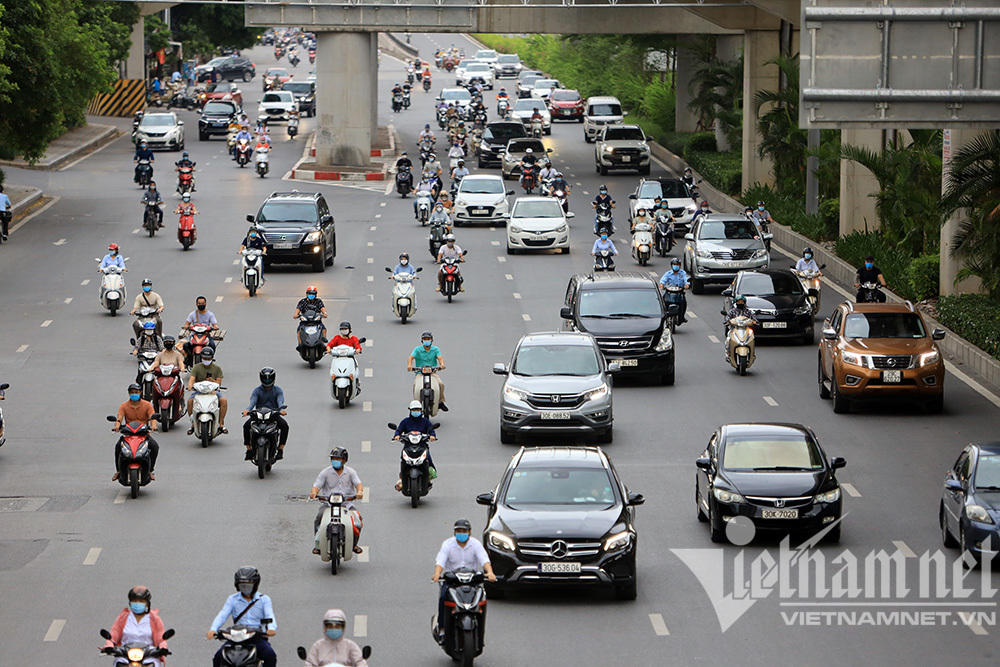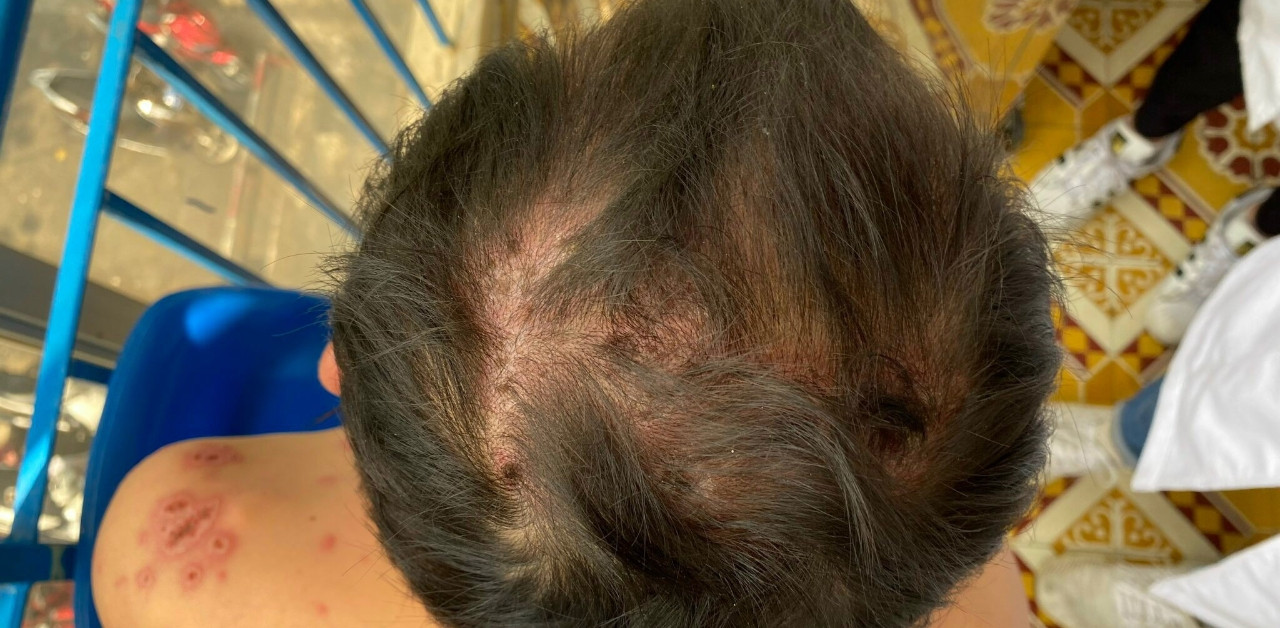Hanoi passed the peak of Covid-19 for more than 10 days, how will the fight against the epidemic change?
According to experts, if there are no new strains imported from abroad, Omicron is still the main circulating SARS-CoV-2 strain in Hanoi, the number of cases and severe cases will continue to decrease gradually to low levels.
From the beginning of the fourth epidemic wave (from April 29) to the end of April 1, Hanoi has recorded more than 1.48 million Covid-19 cases, leading the country, far ahead of the second ranked province. Ho Chi Minh City (over 595,000 cases). The most “peak” period of the epidemic in the capital was in the second half of February and early March when more than 30,000 Covid-19 cases were recorded for many consecutive days.
However, recently, the number of new infections in Hanoi has continuously decreased. In the news on April 1, Hanoi only recorded 7,734 new F0 cases, with 2,076 community cases and 5,658 isolated cases. Compared to the previous “peak” period, the number of infections per day has decreased by nearly 4 times.
Talking to VietNamNet, a leader of Hanoi’s health sector said that the peak of Hanoi’s epidemic had passed for more than 10 days. Currently, the number of new infections has decreased a lot compared to the previous period, in recent days it has been less than 10,000. Regarding the vaccination situation, the vaccination coverage rate of Hanoi is at a high level compared to the whole country: the rate of complete basic injections is about 99.6 – 99.7%, additional doses, booster injections. also reached a very high rate. In particular, 88% of people in the risk group received 3 doses of vaccines.
According to the representative, in the new situation, one of the very important issues is to continue reviewing and promoting Covid-19 vaccination. “It is necessary to continue to propagate and review migrants, immigrants from other areas to Hanoi or paralyzed patients, lying at home but not vaccinated, they must be vaccinated. Get enough basic injections if you haven’t already, and inject additional and booster shots if you’ve completed the basic ones,” he said.
Regarding testing, it is currently mainly recommended to test only for people in the risk and symptomatic groups instead of widespread testing. People in risk groups include: people over 65 years old, people with underlying medical conditions, pregnant women, immunocompromised people, people with severe chronic end-stage diseases, people with immunocompromised diseases, …
The leader also said that up to this point, there are some issues in epidemic prevention and control that are no longer relevant, such as taking daily case codes or assessing epidemic levels.
Specifically, with the problem of assessing the level of the epidemic, if according to the previous point of view, encouraging the assessment to each commune and ward, many places will be at level 4 when considering the new F0 number, leading to a series of problems behind. such as stopping students from going to school, reducing social interactions. This will be difficult when we have “opened up” to the world and started sending students back to school. Besides, in terms of criteria related to treatment such as the rate of ICU beds, the commune and grassroots health levels cannot meet them.
It is known that many localities have made proposals to the Ministry of Health and are waiting for specific instructions to make further changes in epidemic prevention.
 |
| Nguyen Trai Street, Hanoi – Photo: Pham Hai |
Assoc. Prof. Dr. Nguyen Huy Nga, former Director of the Department of Preventive Medicine (Ministry of Health), said that Hanoi has passed the peak of the epidemic, so it is inevitable that the number of F0 will go down and will continue to decrease in the coming time. if no new strains appear. According to Assoc. Russia, more than 1.4 million cases have been announced in Hanoi, which is quite a large number. However, based on the rules of epidemiology, this is only “the iceberg”. When the epidemic has spread strongly to the community, the actual number of F0 can exceed many times.
PGS compares with a common epidemic of dengue fever, according to the rules of epidemiology, 1 person has dengue fever, which means maybe 4-5 other people have been bitten by mosquitoes, have the virus in their body but do not get sick.
“Covid-19 is the same. Many people have the disease but do not develop symptoms. Or have symptoms but they do not test, do not detect themselves infected. There are also people who test positive without declaring, only self-treating at home; Some people do not declare it because it is difficult to contact the local health care,” Assoc.
He affirmed, when the number of cases has “passed the peak”, the decline is inevitable.
In addition, there is currently no mandatory requirement for people to make a medical declaration, so many F0 will not report it, except for those who need to apply for a certificate to enjoy insurance or F0 have underlying medical conditions and want to be monitored by the local health care provider. Therefore, in the coming time, the number of F0 announced will continue to decrease.
Forecasting the epidemic situation in Hanoi in the coming period, Assoc. Prof. Dr. Nguyen Huy Nga said that if no new strains from abroad appeared, Omicron would still be the main circulating strain of SARS-CoV-2 in the capital. the number of infected and severe cases will continue to decrease gradually to low levels. Even Covid-19 can become an “endemic disease”.
“However, this only happens if there is no new strain. Therefore, people should still try to prevent disease, comply with 5K, wear masks, wash hands with soap often. People with weak health, with underlying diseases, the elderly, if they have not been vaccinated or have not had enough shots, they need to continue to be vaccinated,” said Associate Professor Nga.
According to him, the government still needs to promote propaganda and remind people to take good preventive measures to protect their health, not only with Covid-19 but also many other infectious diseases. For groups at high risk of severe progression but not vaccinated, measures should be taken to protect them.
VietNamNet raises the problem that during the peak period of the epidemic in Hanoi recently, the grassroots health system (commune health care) was overloaded. The consequence is that medical staff are exhausted, “even at F0 station”, while it is also very difficult for people to access the medical force. So when the epidemic is on the way down, what preparations should be made to avoid repeating that situation if a new epidemic occurs?
Expressing his opinion on the above issue, Assoc. Prof. Dr. Nguyen Huy Nga said that the number of human resources of the grassroots health care sector has been in line with the standards ever since. When the epidemic broke out, they “carried” more tasks, leading to overload. But if the epidemic subsides, all jobs return to normal, such a number of staff is appropriate.
Therefore, according to PGS, there should be policies and regimes to train and develop resources for family doctors. This system is a good force to directly treat, take care of each family, each F0, provide medical examination and treatment on demand, serve patients at home; Commune and ward health centers mainly operate according to the nature of public health and perform the task of disease prevention.
| Ward health workers in Hanoi came to give medicine to a family of F0 – Photo: N.Lien |
In countries with a developed medical system, the field of family doctors is quite popular, but to the Vietnamese people, it is still quite new. They can work freely, can also join a network, private clinic, etc.
“Currently in Vietnam, this force is very small. Family doctors need to be trained in their own industry, as an independent specialty. They also go to medical school like other majors, are general practitioners, but their work is closely related to each household, so they can ensure health care for each F0,” said Associate Professor Nga.
According to him, in order to make the best use of this force, the organization needs to study carefully to harmonize the existing grassroots health system and the family health system. In addition, there is a training policy and a specific and reasonable mechanism for the family medical force.
Quynh Anh
at Blogtuan.info – Source: vietnamnet.vn – Read the original article here



